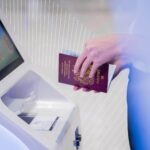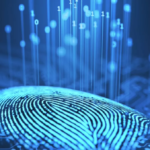
As technology continues to evolve at an unprecedented pace, the age-old battle against counterfeit travel documents is witnessing a turning point. Biometric innovation has emerged as a game-changer, revolutionizing the way we authenticate identity and travel.
Unique Identity Verification
Biometric technology revolves around the use of distinct physical or behavioral traits for identity verification. Instead of relying solely on traditional identification documents, biometric systems capture and analyze individual characteristics, such as:
- fingerprints,
- facial features,
- iris patterns,
- and voiceprints.
This shift towards unique identity verification is making it increasingly difficult for counterfeiters to forge travel documents successfully.
Facial Recognition at the Forefront
Facial recognition technology has become one of the most widely adopted biometric methods for identity verification. Cameras capture and analyze the unique facial features of travelers, cross-referencing them with extensive databases to establish their authenticity. The precision and speed of facial recognition have significantly improved, leading to more reliable identity checks and minimizing the risk of counterfeit travel documents passing through undetected.
Fingerprint Authentication
Fingerprints have long been considered one of the most distinguishing biometric features, and their use in travel authentication has amplified security at border crossings. Integrated fingerprint scanners quickly and accurately match travelers’ prints with those stored in databases, ensuring that the person presenting the travel document is indeed the legitimate owner. This level of certainty deters counterfeiters from even attempting to replicate such intricate details.

Iris Scanning Advancements
Iris scanning technology has emerged as a robust biometric method that is challenging to counterfeit successfully. The complex and unique patterns within the human iris make it a reliable identifier. Advanced iris scanners can capture high-resolution images, ensuring accuracy even under varying environmental conditions. As a result, the risk of counterfeit travel documents bypassing iris scans is significantly reduced.
Multi-Modal Biometrics for Enhanced Security
To fortify the fight against counterfeit travel documents, multi-modal biometric systems are becoming increasingly prevalent. These systems combine two or more biometric methods, such as facial recognition and fingerprint authentication, for a comprehensive and robust identity verification process. The convergence of different biometric traits makes it exceedingly difficult for counterfeiters to mimic and ensures a higher level of security at border checkpoints.
The Emergence of Mobile Biometrics
As the world embraces the era of smartphones and mobile technology, biometrics is also making its way into handheld devices. Mobile biometric systems allow travelers to verify their identity conveniently and securely using their smartphones. This advancement offers the potential for expedited and touchless border crossings, making the traditional use of counterfeit travel documents obsolete.




